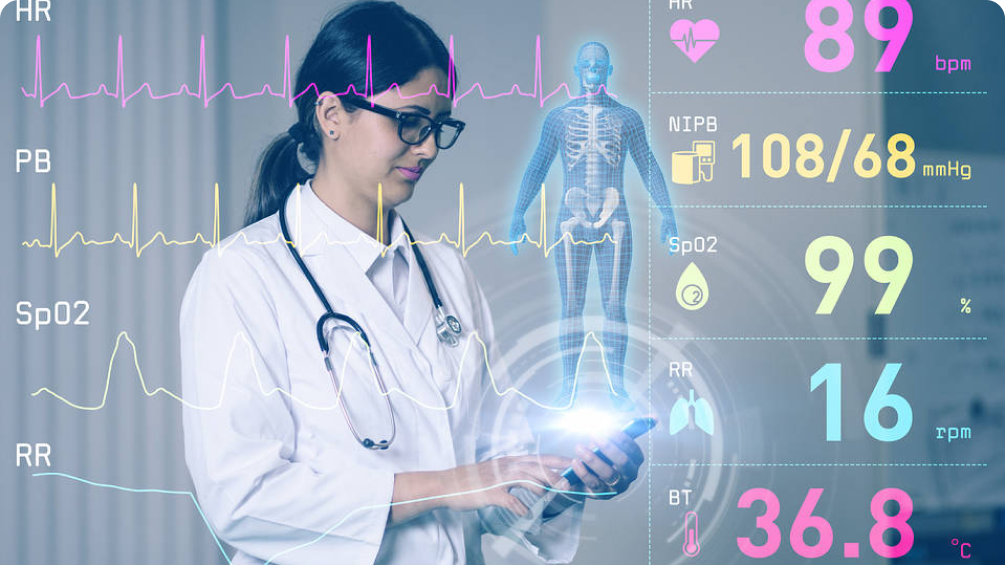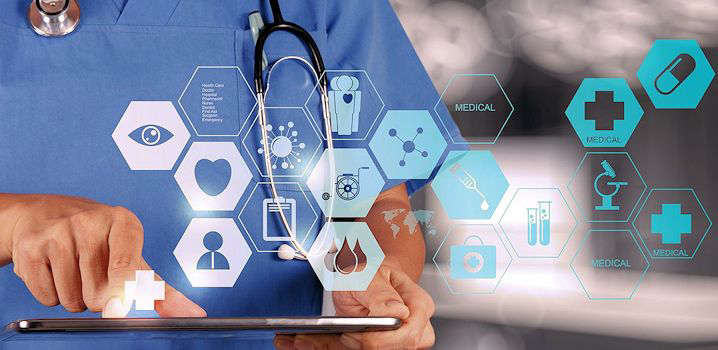Patient Care Management

Healthcare institutions globally, especially in the wake of the pandemic, confront significant challenges in remote patient monitoring and care delivery. With patients increasingly viewing healthcare as a consumer service, there’s a heightened demand for better amenities, precise information, and swifter services. While the industry strives to meet these expectations, inherent human limitations often impede the delivery of quality patient care despite management pressures.
To address this, many hospitals and clinics are turning to automation through robust Hospital Information Management Systems (HIMS) to streamline processes and alleviate the burden on staff and patients alike. In the evolving landscape of healthcare, Patient Care Management (PCM) stands as a beacon of proactive and holistic care delivery. PCM emphasizes optimizing patient outcomes through a dedicated care team working collaboratively to ensure timely and tailored interventions.
Perennial Patient Problems in Healthcare Institutions
Some of the persistent problems that occur in most of the patient engagement in healthcare are:
- Registration and Payment Delays: Patients often encounter delays during the registration process and while making payments for services.
- Appointment Selection and Confirmation: Securing appointments with preferred healthcare providers can be cumbersome and may lack efficient confirmation mechanisms.
- Doctor Selection Options: Patients desire the ability to choose their attending physicians based on personal preferences or recommendations.
- Guidance for Hospital Services: Patients require assistance navigating hospital facilities and accessing services such as directions and information.
- Room Selection and Billing Estimates: Patients seek options to select rooms according to their preferences and obtain accurate billing estimates.
- Reports and Discharge Delays: There are often delays in receiving medical reports, discharge papers, and other essential documentation.
What is Patient Care Management?
PCM is a proactive approach to healthcare centered around patient needs and preferences. Remote patient monitoring involves effective communication, data analysis, and resource integration to enhance patient experiences and outcomes. PCM operates on the premise that well-managed care leads to improved health outcomes and patient satisfaction.
Key Components of PCM
Several key elements drive the successful implementation of patient engagement in healthcare:
Dedicated Care Team: A dedicated care team comprises professionals from various disciplines who collaborate closely to ensure comprehensive and personalized care for each patient, fostering a holistic approach to healthcare delivery.
Data-Centric Care Plan: These are meticulously tailored based on in-depth analysis of patient data, allowing healthcare providers to identify trends, anticipate needs, and adapt treatment strategies effectively to optimize patient outcomes.
Medication and Care Management Tools: Utilization of advanced tools such as electronic health records and telemedicine solutions enables healthcare providers to do remote patient monitoring, track medication adherence, and facilitate timely interventions, enhancing the overall management of patient care.
Hospital-to-Home Program: Through this program, patients experience smooth transitions from acute care settings to their homes, reducing the risk of readmissions and promoting patient satisfaction by ensuring continuity of care in familiar environments.
Patient Education Resources: Accessible patient education resources empower individuals to take an active role in managing their health by providing relevant information, fostering informed decision-making, and promoting healthier lifestyles.
Patient-Physician Communication: Effective communication between patients and physicians cultivates mutual understanding, facilitates shared decision-making, and strengthens the patient-provider relationship, ultimately leading to improved health outcomes and higher satisfaction levels.
Care Coordination: Remote patient monitoring enhances healthcare delivery by facilitating seamless communication and collaboration among different healthcare providers, minimizing redundancies, and ensuring that patients receive consistent and cohesive care across various settings.
Community Resources: Integration of community resources into healthcare services addresses patients’ social determinants of health, enhances support networks, and promotes holistic well-being by connecting individuals with valuable local services and support systems.
Decision Support: Tools such as clinical guidelines and evidence-based protocols assist healthcare providers in making informed decisions, optimizing treatment approaches, and aligning interventions with best practices to achieve superior patient outcomes.
Performance Measurement: Regular remote patient monitoring of key performance indicators enables healthcare organizations to evaluate the effectiveness of care delivery processes, identify areas for improvement, and drive ongoing enhancements to ensure the delivery of high-quality, patient-centered care.
Enhancing Patient Engagement and Care through Automation Tools
Let’s explore various automation tools designed to enhance patient engagement, perform remote patient monitoring, and improve the quality of care provided.
Streamlining Appointment Management
Integrating patient record management systems with hospital websites offers patients seamless appointment booking options. Patients can conveniently schedule consultations, select preferred doctors, and make secure payments online. This integration ensures a smoother patient experience and reduces administrative burdens.
Optimizing Patient Check-ins with Kiosks
Kiosks integrated with HIMS streamline patient check-ins, reducing wait times and minimizing staff workload. Patients can access important information, download reports securely, and navigate the hospital premises efficiently using self-service kiosks. Additionally, kiosks facilitate hassle-free payments and provide accurate billing estimates, enhancing operational efficiency.
Empowering Patients through Portals
Patient record management systems empower individuals to manage their healthcare remotely. From registration and appointment scheduling to accessing medical records and making payments, patients can conveniently engage with healthcare services from their homes. Family grouping features simplify access to multiple family members’ health records, while automated notifications keep patients informed about upcoming appointments and billing cycles.
Leveraging WhatsApp/SMS Integration for Communication
Integrating WhatsApp and SMS services enables hospitals to deliver timely notifications to patients, doctors, and staff members. In remote patient monitoring, patients receive appointment reminders, result notifications, payment alerts, and secure links to download reports. Doctors and management staff benefit from automated reminders, duty alerts, and real-time updates on clinical data and hospital operations.
Enhancing Remote Patient Monitoring with Smart Wearables and IoT
Smart wristbands equipped with IoT technology enhance remote patient monitoring and hospital management. These wearable devices track vital signs such as temperature, heart rate, and blood pressure, allowing healthcare providers to remotely monitor patients’ health status. Additionally, smart wristbands aid in locating patients within the hospital premises, enabling prompt assistance and improving overall patient care.
Incorporating these automation tools into healthcare facilities not only enhances patient engagement but also streamlines operational processes, ultimately leading to improved quality of care and enhanced patient satisfaction.
Advantages of Patient Care Management
PCM offers a myriad of benefits:
Improved Patient Satisfaction: By providing personalized care, coordinating services, and intervening promptly, patients feel valued and satisfied, fostering loyalty to healthcare providers.
Enhanced Chronic Disease Management: Continuous remote patient monitoring and tailored guidance empower patients to manage chronic conditions effectively, leading to better health outcomes and improved quality of life.
Reduced Hospital Readmissions: Proactive measures, including complication prevention and smooth transitions, minimize the likelihood of readmissions, promoting patient well-being and reducing healthcare burdens.
Better Medication Adherence: Utilizing management tools and reminders enhances medication adherence, resulting in improved treatment efficacy and overall health for patients.
Lower Healthcare Costs: By focusing on preventative measures and reducing complications, healthcare costs are minimized, rendering services of patient engagement in healthcare more affordable and sustainable in the long term.
Streamlined Care Coordination: Efficient communication and coordination ensure timely and appropriate care delivery, optimizing resource utilization and improving patient outcomes.
The Future of Patient Care Management
Advancements in technology and healthcare systems herald a promising future for the patient record management system. Integration of AI and machine learning streamlines care coordination and enhances treatment personalization. Telemedicine and remote patient monitoring expand patient access to care and support chronic condition management. Patient-centric care models will continue to gain prominence, elevating patient experiences and outcomes.
Final Thought
To summarize, PCM stands as a cornerstone of modern healthcare, driven by its patient-centered approach and commitment to optimizing outcomes. Amidst the dynamic healthcare environment, the significance of remote patient monitoring resonates profoundly in hospital management functions such as infection prevention, comprehensive patient education strategies, emergency response protocols, and logistical operations.

